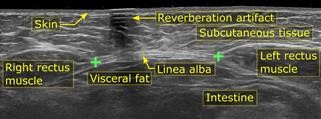The Infertility Organization
Statistics About Infertility
We are the best source for total info and resources for Statistics About Infertility on the Internet.
4) Uterine fibroids: Fibroids are very common (approximately 40% of women may have them) and the mere presence alone does not necessarily cause infertility. Types of Infertility There are two types of infertility: primary and secondary. Pregnancy After Testicular Transplant: Importance of Treating the Couple. (PDF, 5 MB) Fertility and Sterility, 1980.
Hofherr SE, Wiktor AE, Kipp BR, Dawson DB, Van Dyke DL. The Leydig cells in the testicles control the LH, and the cells build androgens. Treatment of Male-factor Infertility. (PDF, 10 MB) Chapter 9 from Progress in Infertility, 1993. But the ruling is also likely to lead to accusations that that the body has overstepped its remit by moving from its remit of health into matters of social affairs.
More Info About Statistics About Infertility

Here are Some More Resources on Examination of Infertility
Overweight or obesity: This may reduce the chance of conceiving. Evaluation of the uterus and fallopian tubes can be performed by hysterosalpingography in women with no risk of obstruction.
Below are Some Even more Resources on Infertility Ovarian Cancer
8,46 Obesity impairs fertility and the response to fertility treatments, including in vitro fertilization; therefore, it is advisable to counsel patients who are obese to lose weight before conception or infertility treatments. Ovulation-inducing drugs and ovarian cancer risk: results from an extended follow-up of a large United States infertility cohort. Epidemiology of Sterility and Infertility Sterility and infertility affect about 10 – 15% of couples. On Regenerating the Ovary and Generating Controversy. (PDF, 37 KB) Cell, 2005. Eating disorders such as anorexia nervosa are also associated with extremely low BMI. Germ cells and white blood cells both appear as round cells on microscopic examination, so immunohistochemical stains are used to differentiate the 2 cell types.
Right here are Some More Resources on Statistics About Infertility
2/7/15 our son was born all thanks to the assistance of Dr. Surgery or embolization for varicoceles in subfertile men. The fertilized embryo is then transferred to womb. Varicoceles are generally asymptomatic, and most men with varicoceles do not have infertility or testicular atrophy. They are very common (approximately 40% of women have them them). S. women, or 6% of the married population 15 to 44 years of age, reported infertility, and 6. In one study, treatment with recombinant HBD1 in asthenozoospermic and leukocytospermic patients who were deficient in HBD1 resulted in improved bactericidal activity and sperm quality, which supports this protein’s role in fertility and its potential role in managing infertility.[28] Other causes Causes of testicular failure also include the following: Granulomatous disease – Leprosy and sarcoidosis may infiltrate the testicle Sickle cell disease – Sickling of cells within the testis leads to microinfarcts Excessive use of alcohol, cigarettes, caffeine, or marijuana Despite a thorough workup, nearly 25% of men have no discernible cause for their infertility. Role of Epididymis in Sperm Maturation. (PDF, 3 MB) Urology, 1989. The embryo is then placed in the uterus to begin a pregnancy. A doctor injects sperm directly into the egg in a dish and then places it into your uterus. The Treatment of Azoospermia with Surgery and ICSI. (PDF, 4 MB) Chapter 10 from Male Fertility & Infertility, 1998.
Previous Next
See also
Infertility Specialist in Jaipur
Infertility Japan
Secondary Infertility Awareness